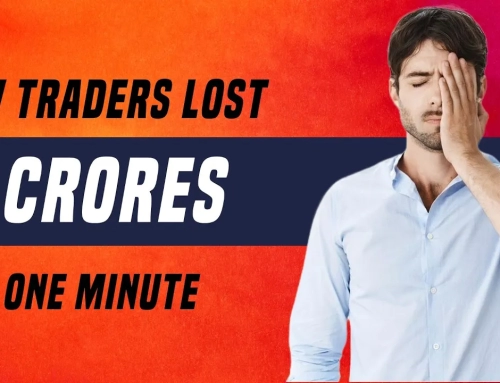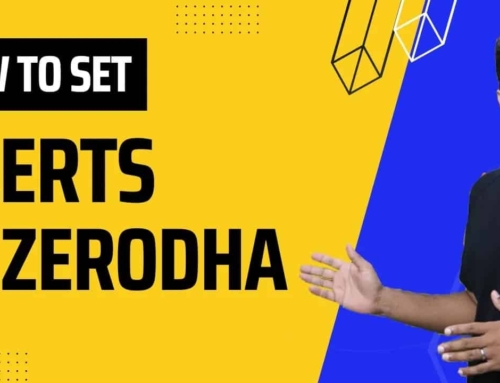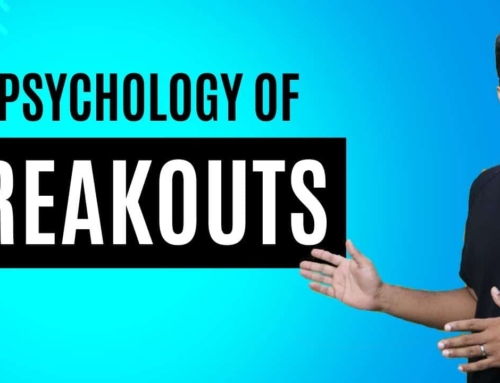Risk Reward is Overrated
So guys, welcome to VRD nation. Through this channel, we are trying to educate our fellow investors and traders on practically every topic that pertains to the stock market, whether it is investing or trading. If you are new to the stock market, or if you are new to this channel, do not forget to subscribe.
Having said that, let’s talk about today’s topic. People ask me, what is your typical risk reward ratio on a certain trade date? My response to that is of course it depends on the strategy. Some strategies have the risk reward of 1:2 and 1:3 and sometimes it’s even higher, but there is something about the discussion which bothers me a lot.
That is why I tell people that there are trades that I take where the risk reward is sometimes 2:1 or 3:1. It means that for every one rupee of reward, I’m willing to risk two rupees or even three rupees. Now, when I say this, there are two types of reaction that I get from people.
The first category of people think that I have no idea how to trade. It is because after all, who would risk 3 rupees to make just 1 rupee.The second category of people are, of course, very curious as to why someone would take such a trade. Now I cannot convince the first category of people, but here is a video to explain to the second category of people that trades with unfavorable risk reward may still be worth taking.
The easiest way to explain this is assume you walk into a casino and you put a hundred rupees worth of coins in a slot machine. Now tell me, in this case, what is the risk reward for the casino? Well, the reward is a hundred rupees and the risk is one lakh rupees. So the risk reward in this situation is actually going to be 1000:1.
It means that for making one rupee, that casino is willing to risk 1 Lakh rupees. Does it make any sense? Why do the casinos do that? Are they crazy? No, they are not crazy. They know exactly what they are doing because for every one person who hits the jackpot, there will be 5,000 more people who will just lose their money.
Even if once in a while, a few jackpots get hit, the casinos have to pay them off. The casinos eventually are going to be profitable because the game that they’re playing is that of Probability. The long term probability works in the favor of the casinos and the same is applicable in trading as well.
Let me give you a practical example of this. This right here is an example of an expiry day strategy, which as many of you know, I deploy every Wednesday and Thursday and on these days, I’m not too worried about the risk reward. On these days, sometimes I sell options worth 5 or 10 rupees and the stop-loss for these trades sometimes are 2 or even 3 times. For a 10 rupee option, assume that I can have a stop loss at 30 rupees and sometimes even 35 or 40 rupees. Why do we need to have that kind of a stop loss? Just like the casino, we know that most of these options that we are selling are going to expire worthless.
We know that the probability is working in our favor and all we need to make sure is that throughout the day, we are not getting shaken out. That’s the reason why we have a wider stop-loss and once in a while, some of them do get hit.
It is because we know that even if let’s say one of these stop losses get hit, the majority of the trades will still work out and hence probability eventually works. The point that I’m trying to make from this video is not to dispute the importance of risk reward. In fact, I believe that risk reward is one of the most important things that you should see in a trade.
Therefore, the point that I’m trying to make here is that risk reward is only one aspect of the trade that you need to keep in mind and the other aspect is probability. If the probability is very high, It is fine. It is not bad to take a trade where the risk reward may seem unfavorable because you know that the probability is eventually going to take care of you.
So guys, welcome to VRD nation. Through this channel, we are trying to educate our fellow investors and traders on practically every topic that pertains to the stock market, whether it is investing or trading. If you are new to the stock market, or if you are new to this channel, do not forget to subscribe.
Having said that, let’s talk about today’s topic. People ask me, what is your typical risk reward ratio on a certain trade date? My response to that is of course it depends on the strategy. Some strategies have the risk reward of 1:2 and 1:3 and sometimes it’s even higher, but there is something about the discussion which bothers me a lot.
That is why I tell people that there are trades that I take where the risk reward is sometimes 2:1 or 3:1. It means that for every one rupee of reward, I’m willing to risk two rupees or even three rupees. Now, when I say this, there are two types of reaction that I get from people.
The first category of people think that I have no idea how to trade. It is because after all, who would risk 3 rupees to make just 1 rupee.The second category of people are, of course, very curious as to why someone would take such a trade. Now I cannot convince the first category of people, but here is a video to explain to the second category of people that trades with unfavorable risk reward may still be worth taking.
The easiest way to explain this is assume you walk into a casino and you put a hundred rupees worth of coins in a slot machine. Now tell me, in this case, what is the risk reward for the casino? Well, the reward is a hundred rupees and the risk is one lakh rupees. So the risk reward in this situation is actually going to be 1000:1.
It means that for making one rupee, that casino is willing to risk 1 Lakh rupees. Does it make any sense? Why do the casinos do that? Are they crazy? No, they are not crazy. They know exactly what they are doing because for every one person who hits the jackpot, there will be 5,000 more people who will just lose their money.
Even if once in a while, a few jackpots get hit, the casinos have to pay them off. The casinos eventually are going to be profitable because the game that they’re playing is that of Probability. The long term probability works in the favor of the casinos and the same is applicable in trading as well.
Let me give you a practical example of this. This right here is an example of an expiry day strategy, which as many of you know, I deploy every Wednesday and Thursday and on these days, I’m not too worried about the risk reward. On these days, sometimes I sell options worth 5 or 10 rupees and the stop-loss for these trades sometimes are 2 or even 3 times. For a 10 rupee option, assume that I can have a stop loss at 30 rupees and sometimes even 35 or 40 rupees. Why do we need to have that kind of a stop loss? Just like the casino, we know that most of these options that we are selling are going to expire worthless.
We know that the probability is working in our favor and all we need to make sure is that throughout the day, we are not getting shaken out. That’s the reason why we have a wider stop-loss and once in a while, some of them do get hit.
It is because we know that even if let’s say one of these stop losses get hit, the majority of the trades will still work out and hence probability eventually works. The point that I’m trying to make from this video is not to dispute the importance of risk reward. In fact, I believe that risk reward is one of the most important things that you should see in a trade.
Therefore, the point that I’m trying to make here is that risk reward is only one aspect of the trade that you need to keep in mind and the other aspect is probability. If the probability is very high, It is fine. It is not bad to take a trade where the risk reward may seem unfavorable because you know that the probability is eventually going to take care of you.



![What is Virtual Contract Note [Zerodha]](https://www.vrdnation.com/wp-content/uploads/2023/10/maxresdefault-virtual-note-500x383.jpg)



Leave A Comment